Arctonoe fragilis (Baird, 1863)Common name(s): Commensal scaleworm, Ruffled scaleworm, Fragile scaleworm, Frilled commensal scaleworm, Scaleworm |
|
| Synonyms: Polynoe fragilis, formerly part of Arctonoe vittata | 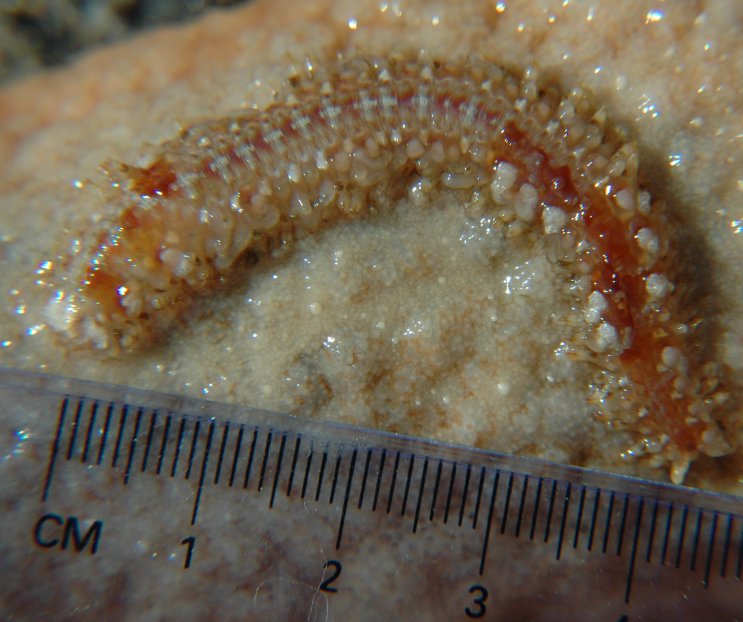 |
| Phylum Annelida
Class Polychaeta Order Phyllodocida Superfamily Aphroditidae Family Polynoidae |
|
| Actonoe fragilis on the ray of its host seastar, Evasterias troschelii. | |
| (Photo by: Dave Cowles, July 2005) | |
How to Distinguish from Similar Species:Arctonoe pulchra and Arctonoe vittata have elytra whose margins are smooth or only slightly ruffled, plus Arctonoe vittata has a dark band across segments 7 and 8 behind the head.
Geographical Range: Alaska peninsula to San Francisco Bay, CA (uncommon in CA)
Depth Range: Low intertidal to 275 m
Habitat: Mostly symbiotic on the seastar Evasterias troschelii
Biology/Natural History: These worms are most often commensals on painted seastars Evasterias troschelii, but it may sometimes be found on other species of seastar or may be freeliving. Alternate hosts include Leptasterias aequalis, Leptasterias hexactis, Orthasterias koehleri, Stylasterias forreri, Luidia foliata, Pisaster ochraceous, and Solaster dawsoni. They are attracted by the smell of their host, at least as long as the host is uninjured. Usually only one individual occurs on a host at a time (they are antagonistic to one another), but up to 4 have been found. They feed on detritus
Members of Family
Polynoidae,
unlike most other errant polychaetes, have parapodia specialized for
walking
rather than as paddles. Their longitudinal muscles, which
caused
lateral undulations in other polychaetes, are poorly developed and they
don't undulate much. As a result, although they can walk
efficiently
they are poor swimmers.
| Return to: | |||
| Main Page | Alphabetic Index | Systematic Index | Glossary |
References:
Dichotomous Keys:Flora and Fairbanks, 1966
Kozloff 1987, 1996
Smith and Carlton, 1975
General References:
Brusca
and Brusca, 1978
Harbo,
1999
Morris
et al., 1980
O'Clair
and O'Clair, 1998
Ricketts
et al., 1985
Sept,
1999
Scientific
Articles:
Web sites:
General Notes and Observations: Locations, abundances, unusual behaviors:
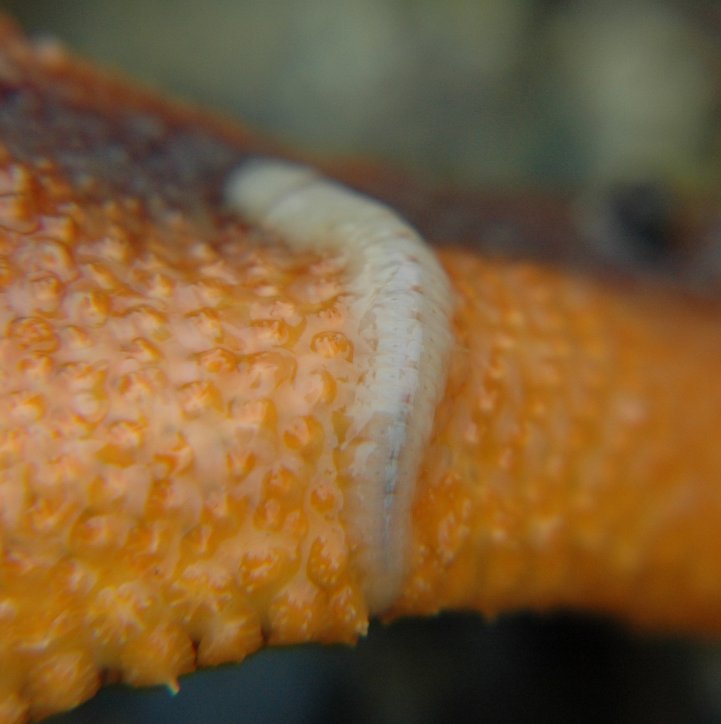 |
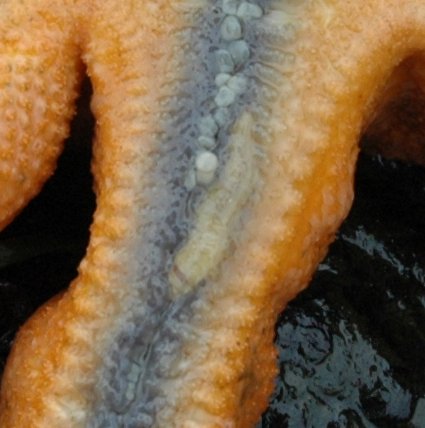 |
| These two views show Arctonoe fragilis on the ray of Solaster stimpsoni. | Photos by Dave Cowles, July 2005 |
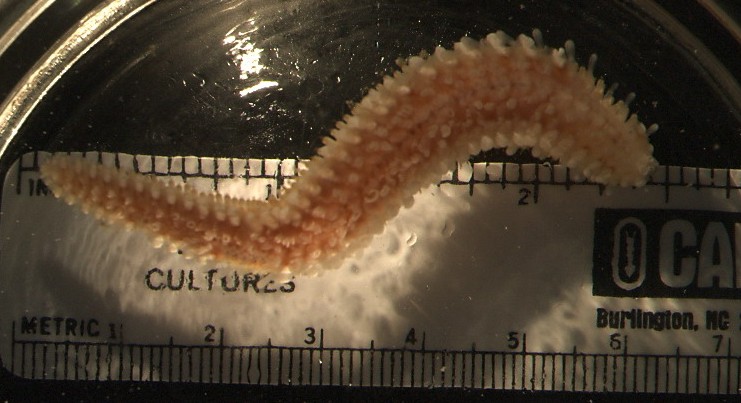
This large 7 cm-long individual was commensal on the seastar Orthasterias
koehleri. Click Here
to see the worm on its host seastar.
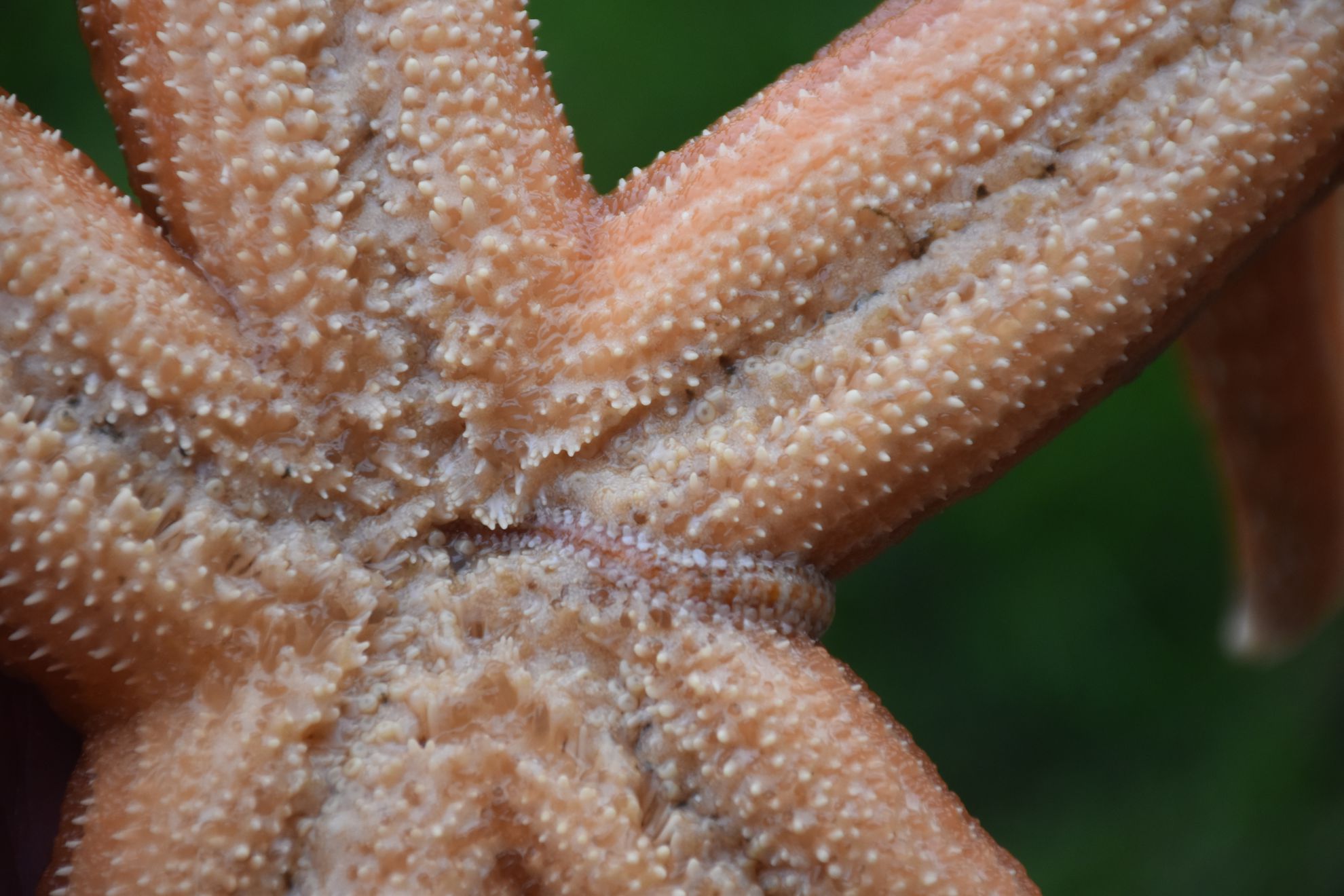 Arctonoe fragilis symbiont on Evasterias troschelii.
Arctonoe fragilis symbiont on Evasterias troschelii.
Authors and Editors of Page:
Dave Cowles (2005): Created original page and updated it since then